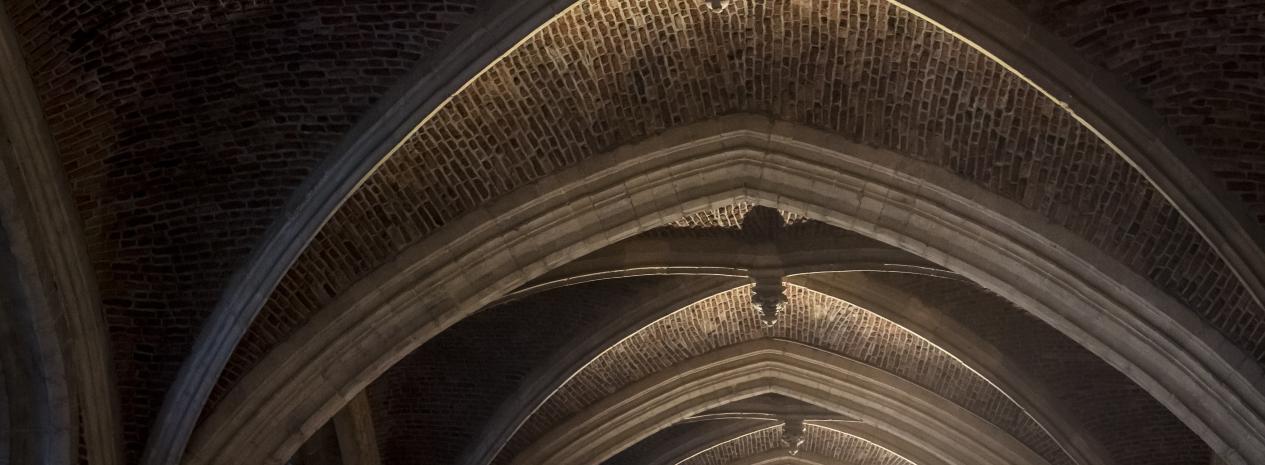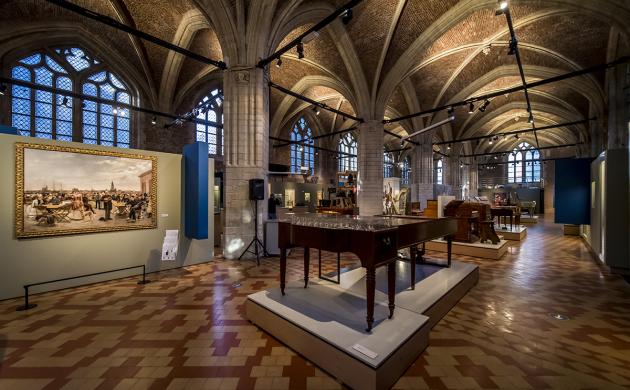1250: a second Vleeshuis
The current Vleeshuis replaced the previous building from 1250, which, in its turn, was a substitute for an even earlier building. The Vleeshuis from 1250 was commissioned by the Duke of Brabant at the expense of the city. It likely served as a slaughterhouse as well as a butchers’ hall.
1504: a new Vleeshuis construction in progress
At the beginning of the 16th century, the Duke of Brabant gave permission to build a new hall for the Antwerp meat trade. The butchers’ guild financed the new building, which was twice the size of the previous building. It served as a butchers’ hall and market as well as community place for the guild members.
1796
In 1796, the French abolished the guilds. The Vleeshuis was no longer used by the butchers’ guild, so it was sold three years later. The butchers – independently – bought the Vleeshuis and resumed their activities, but on a limited scale. They rented out the main part of the building. Painter Nicaise De Keyser had his studio on the first floor, and an opera troupe gave performances on the very same floor. Later, in 1841, the Antwerp butchers sold the Vleeshuis to a wine merchant.
1913
In 1899 the City of Antwerp acquired the Vleeshuis, which had fallen into disrepair. Architect Alexis van Mechelen restored the building, and in 1913 in opened as museum dedicated to the applied arts. Throughout the 20th century the collection of musical instruments grew in importance, and in 2006 the museum became a music museum.
Today
Today, the Vleeshuis displays a collection of musical objects. Furthermore, it is one of the most impressive historical monuments in the city of Antwerp. Although many changes have been made to the building, the monument is still in a quite historical state. It also has its impressive original timber roof construction.



